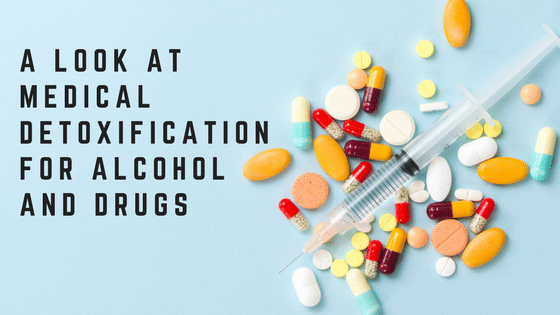Enroll in specialized safe alcohol detox programs in Morris County NJ for a reliable recovery.
Enroll in specialized safe alcohol detox programs in Morris County NJ for a reliable recovery.
Blog Article
The Role of Alcohol Detox in Managing Withdrawal Signs Properly
Navigating the troubled trip to soberness can be complicated, with alcohol withdrawal signs presenting a substantial obstacle. The role of alcohol detox in this procedure is essential, supplying a clinically monitored environment for safe alcohol elimination and signs and symptom administration.
Recognizing Alcohol Withdrawal: Symptoms and Period
What occurs when a chronic drinker unexpectedly stops consuming alcohol? The body, long accustomed to the depressant impacts of alcohol, experiences a rebound impact called withdrawal. Signs and symptoms can differ from light to serious, normally appearing within 8 hours of the last beverage, peaking by 24 to 72 hours, and potentially lasting weeks.
At first, people may deal with anxiousness, restlessness, and sleeping disorders. Physical signs and symptoms such as sweating, quick heart rate, and hand tremblings might also take place. As the withdrawal progresses, symptoms can intensify to extreme confusion, hallucinations, high temperature, and seizures, a problem referred to as ecstasy tremens.

The Idea of Alcohol Detox: A Brief Introduction
The principle of alcohol detoxification is a crucial component of the recuperation trip for those having problem with alcohol dependence. The procedure, while facility, contributes in removing the body of alcohol and its harmful effects. As we proceed, the relevance of this detox procedure in regard to taking care of withdrawal symptoms will certainly be adequately gone over.
While numerous regard alcohol cleansing as an easy procedure, it is really an intricate physiological procedure that the body undergoes to clear itself of unsafe alcohol-related contaminants. The liver, primarily in charge of cleansing, functions persistently to metabolize the alcohol taken in. As usage increases, the liver battles to maintain, causing contaminant build-up in the body. This buildup can trigger extreme physical and psychological health issues. Alcohol detoxing, as a result, comes to be a crucial action in the recovery trip. It includes the cautious administration of withdrawal signs that emerge as the body gets used to the lack of alcohol. This process, while awkward, is necessary for the body to return to its optimal working state, leading the method for long-lasting healing.
In the realm of dependency recuperation, the importance of the alcohol detoxification procedure frequently stays underappreciated. It makes up the first step in alcohol dependency therapy, concentrating on eliminating the unsafe material from the body. When done correctly and under medical supervision, it can reduce the intensity of withdrawal symptoms, decreasing the threat of problems.
Exactly How Alcohol Detoxification Assists in Handling Withdrawal Signs And Symptoms
Alcohol cleansing plays an important role in managing withdrawal signs. It involves the risk-free elimination of alcohol from the body, therefore lowering the physical and psychological effects of withdrawal. This process aids in developing a secure structure for subsequent healing efforts.
Regardless of its potential threats, detoxing from alcohol can considerably help handle and ease withdrawal symptoms. The body, accustomed to the existence of alcohol, reacts negatively when it is instantly denied, leading to withdrawal signs and symptoms. Alcohol detox intends to decrease these signs and symptoms and prevent potential complications.
While the procedure of cleansing can be difficult, it plays an important role in taking care of withdrawal signs connected with alcohol cessation. The purpose of detoxing is to securely manage withdrawal symptoms when a person stops alcohol consumption alcohol. This procedure can help to lessen the physical effects of withdrawal, such as drinking, seizures, and hallucinations, by progressively reducing alcohol intake or making use of drug to regulate signs.

The Structure of a Reliable Alcohol Detoxification Program
To make certain a successful healing, the structure of a reliable alcohol detoxification read here program ought to be carefully developed and personalized for each individual. This suggests taking right into account their alcohol consumption history, degree of dependency, physical wellness, and psychological state.
The procedure generally starts with a detailed evaluation to figure out the seriousness of the dependency and any possible co-occurring problems. This assessment assists in establishing one of the most appropriate therapy plan.
Next, a detoxification process is initiated which is intended to get rid of alcohol from the body. This stage can be challenging because of withdrawal signs and symptoms, however a reliable program supplies essential assistance to handle these signs and symptoms and stop regression.

Ultimately, an efficient alcohol detoxification program must have a strong aftercare strategy, supplying recurring support to avoid relapse and guarantee lasting recovery. This all natural strategy is go to my blog crucial in making certain the success of the detox program.
The Role of Medical Supervision in Alcohol Detoxification
Provided the prospective intensity of withdrawal signs and symptoms, medical guidance plays a vital duty in alcohol detox (Safe alcohol detox programs in Morris County NJ). This process typically includes uneasy, and occasionally life-threatening, signs such as tremblings, hallucinations, and seizures. Medical personnel are outfitted to manage these symptoms, using drug to relieve pain and surveillance vital signs to guarantee safety
Along with physical health and wellness, medical guidance additionally provides mental assistance. The process of detox can be emotionally draining, promoting sensations of worry, anxiety, and clinical depression. Educated professionals can provide essential emotional support, helping people handle these feelings properly.
Finally, clinical guidance aids to take care of the danger of issues. Withdrawal can bring about severe health and wellness difficulties, including dehydration and heart issues. Physician can recognize these risks early, giving prompt and ideal intervention.
Conclusion
Finally, alcohol detoxification is a critical initial step in taking care of withdrawal symptoms and steering towards long-lasting soberness. With a structured detoxification program and medical guidance, the extent of withdrawal signs and symptoms can be considerably lowered, boosting comfort and security for the individual. The supreme objective is to guarantee a healthier, alcohol-free life, with continuous support necessary to maintain soberness and avoid relapse.
Report this page